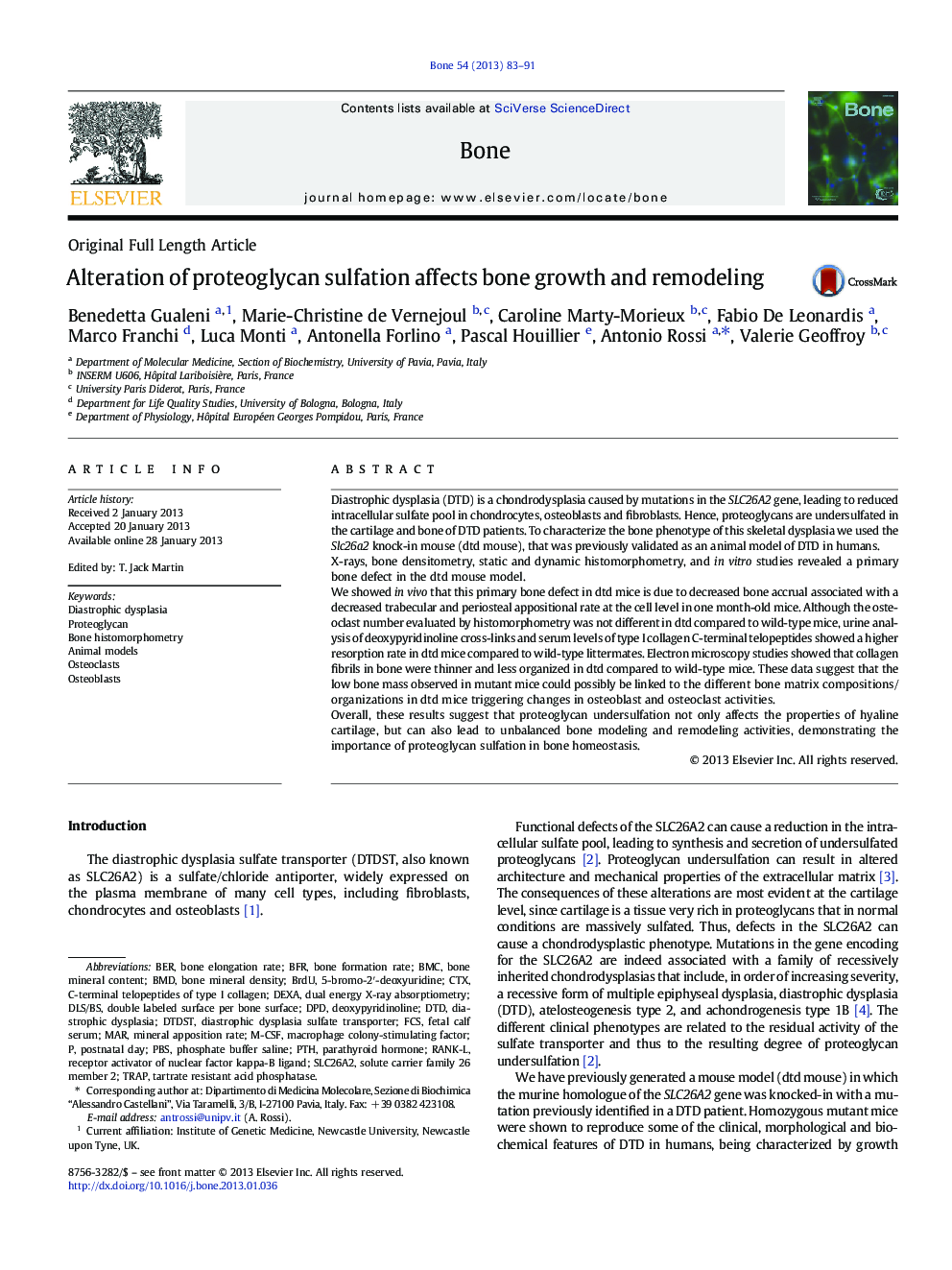| کد مقاله | کد نشریه | سال انتشار | مقاله انگلیسی | نسخه تمام متن |
|---|---|---|---|---|
| 5891078 | 1153264 | 2013 | 9 صفحه PDF | دانلود رایگان |
Diastrophic dysplasia (DTD) is a chondrodysplasia caused by mutations in the SLC26A2 gene, leading to reduced intracellular sulfate pool in chondrocytes, osteoblasts and fibroblasts. Hence, proteoglycans are undersulfated in the cartilage and bone of DTD patients. To characterize the bone phenotype of this skeletal dysplasia we used the Slc26a2 knock-in mouse (dtd mouse), that was previously validated as an animal model of DTD in humans.X-rays, bone densitometry, static and dynamic histomorphometry, and in vitro studies revealed a primary bone defect in the dtd mouse model.We showed in vivo that this primary bone defect in dtd mice is due to decreased bone accrual associated with a decreased trabecular and periosteal appositional rate at the cell level in one month-old mice. Although the osteoclast number evaluated by histomorphometry was not different in dtd compared to wild-type mice, urine analysis of deoxypyridinoline cross-links and serum levels of type I collagen C-terminal telopeptides showed a higher resorption rate in dtd mice compared to wild-type littermates. Electron microscopy studies showed that collagen fibrils in bone were thinner and less organized in dtd compared to wild-type mice. These data suggest that the low bone mass observed in mutant mice could possibly be linked to the different bone matrix compositions/organizations in dtd mice triggering changes in osteoblast and osteoclast activities.Overall, these results suggest that proteoglycan undersulfation not only affects the properties of hyaline cartilage, but can also lead to unbalanced bone modeling and remodeling activities, demonstrating the importance of proteoglycan sulfation in bone homeostasis.
► The osteopenic phenotype in a mouse model of proteoglycan undersulfation has been characterized.
► In vivo and in vitro studies revealed a primary bone defect in the dtd mouse model.
► Low bone mass in mutant mice is linked to bone matrix alterations triggering changes in osteoblast and osteoclast activities.
► Electron microscopy showed that collagen fibrils were thinner and less organized in mutant compared to wild-type mice.
► Results demonstrate that the SLC26A2 gene not only affects chondrogenesis, but also leads to unbalanced bone modeling and remodeling activities.
Journal: Bone - Volume 54, Issue 1, May 2013, Pages 83–91
